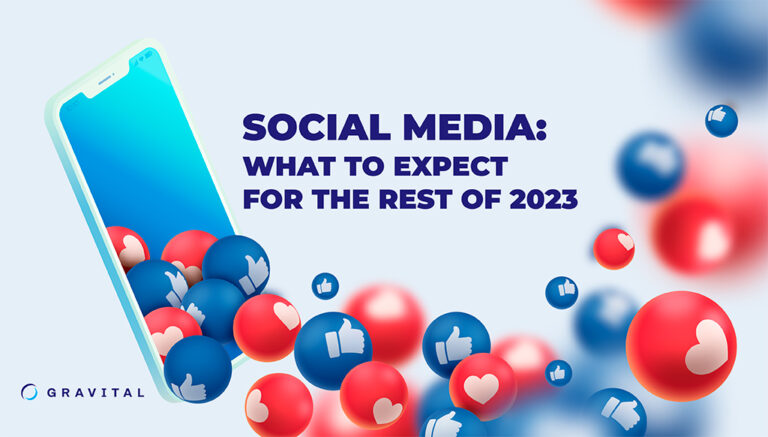Last year was defined by frantic change. This year won’t be much different. With so many twists and turns, it’s difficult to see what’s around the corner, but here’s one forecast:
The social media landscape is always changing, and next year will be no exception. The top players probably will continue to dominate the market, and new platforms will pop up here and there, while others will be on their way out.
That’s the partially sunny version. The reality is foggy.
What will happen to TiKTok under the bans and to Twitter under Musk? And what of Meta and its metaverse? The company’s value tanked in 2022. Is that rock bottom?
With nearly 3 billion active monthly users, Facebook is the biggest social media platform in the world. But even the Roman Empire stumbled and fell, so Facebook can’t rest in its laurels.
As TikTok’s short-form videos change consumption behaviors across most, if not all, social platforms, Facebook is waking up to a new reality and changing lanes.
• Unconnected Distribution and AI-Recommended Content
You may have noticed that Facebook has been showing you more suggested content from people and pages you don’t know or follow (unconnected distribution). That is because Facebook is shifting its focus away from social connections and toward more engaging content, such as short videos or Reels.
Zuckerberg recently explained this move in a recent interview with The Verge: “What’s basically going to happen is that, over the next year or two, we’ll start showing more recommended content in the Feed,” he said, adding that 40% of the content in Facebook’s main feeds will come from pages and people we don’t know or follow.
It seems that Facebook is following in TikTok’s footsteps. The Chinese app shows users the best content from all users versus encouraging them to build social connections, or a social graph, as Facebook does. This algorithm-led approach enables TikTok to maximize user engagement because feeds are not limited to updates from friends, pages and groups chosen by users. The result is higher exposure potential for video content creators whose posts are then seen by people outside of their own audience.
While promoting AI-recommended content, Facebook will have to find a better way to highlight posts from family and friends. The network’s competitive differentiator is the social graph users can build on the platform. These social connections compel users to visit Facebook frequently to see the latest updates from friends, family and groups. Right now, no other social platform can do that as effectively. But Facebook’s approach is becoming less valuable as more users seek entertainment–rather than social connections–on TikTok and similar apps.
Based on Facebook’s new TikTok-like direction, brands and marketers should adapt their Facebook posts to attract and engage outside audiences. High-engagement posts include short videos, memes and polls.
• Click-to-Message
Another trend potentially gaining steam on Facebook in 2023 is click-to-message. A significant portion of user engagement on the network happens in direct messages via Messenger. As a result, Meta is pushing click-to-message ads, both on Messenger and WhatsApp, to capitalize on this user behavior. But will users want to engage with brands in their DMs? We’ll see.
• Avatar Integration
As Meta pushes the metaverse and as more social media users expand their digital footprints, the company will push for avatar integration and crossover in its apps and platforms, including Facebook. By promoting avatars as digital identity, Meta will encourage users to engage with the apps through their digital characters. This move may encourage companies to offer sponsored items for avatars as a way to connect with users and boost brand visibility.
• AI-Recommended Content and Reels
Last year, Meta adjusted Instagram’s algorithm to prioritize short-form videos and increase user engagement, in effect making it more like TikTok. But after several high-profile users complained, Instagram announced in July that it would reduce the number of AI-recommended posts in user feeds until it “could get it right” and ensure that users were having a good experience. Until then, the main feed will be a mix of old and new posts from users you’re following and not following.
• New Creation Tools
One of Instagram’s advantages is its focus on creators, whom it must continue to engage to compete effectively with other platforms and guide them to the metaverse. To this end, the platform will likely enhance content creation through GIF generation from live photos, digitized artwork (NFT art) tools, and integration of AR and 3D posts from its Spark AR platform.
This trend may lead to new opportunities for brands to reach target audiences through AR ads and interactive ad formats that will engage users in new ways.
• Livestream Shopping
Instagram has been experimenting with livestream shopping, or live e-commerce, which has exploded in other markets and networks. U.S. sales for this hybrid industry–part social media, part retail–are set to reach $20 billion in 2022 and about $60 billion in 2026, according to Coresight Research and a Forbes report. Amazon is working on growing its Amazon Live, and Walmart has partnered with TikTok, Twitter, YouTube, Facebook and Talkshoplive to host live shopping events.
Given the popularity of livestream shopping in social media, Instagram is likely to push its Live Shopping feature further in 2023.
With Elon Musk at the helm, it’s impossible to predict or guess what will happen to Twitter this year, but here’s the latest.
• Longer Tweets
In a Jan. 8 tweet, Musk announced that long-form tweets will be available to users starting in February. The tweets will be displayed in their regular size and format with a “show more” prompt at the end. Musk is hoping that this feature will provide an alternative to long tweet threads and that the capacity to share longer updates will encourage content creators to post their content on Twitter rather than post links to other apps.
• Text Formatting Options
Musk also said that new text formatting options, such as bold, underline, italics and font size options, will be integrated into Twitter’s user interface to allow users to customize their tweets and improve their experience.
• Side-Swiping Timelines
Another change Musk is implementing is the return of Twitter’s side-swipe option to switch between algorithmic and chronological timelines. This feature was tried in early 2021 but was removed after users complained about it.
• Subscription Services
Musk said he plans to boost revenue through subscription services such as Twitter Blue, which grants users the coveted blue “verified” checkmark and the ability to edit tweets. In addition, Twitter is piloting a new service called Twitter Blue for Business, which adds a gold checkmark to official business accounts.
• Content Moderation
To improve free speech on Twitter, Musk initially planned to allow tweets and comments that fall within legal grounds instead of restricting them based on internal parameters. He then changed his mind and announced that a content moderation council comprising diverse viewpoints would be in charge of all major content decisions. Given Musk’s flip-flop nature, chances are that content moderation will be the subject of considerable experimentation this year.
TikTok
• More Bans?
It’s hard to estimate the effect that the ban on federal and state government devices will have on the entertainment platform. Could broader bands be in the pipeline?
• Livestream Shopping
Livestream e-commerce is a key earner in the Chinese version of the app. It’s convenient and entertaining for users, a good source of revenue for the platform and an excellent monetization opportunity for content creators. Right now, creators can’t make as much money on TikTok as they do on YouTube because ads can’t run during short clips. So it’s highly probable that TikTok will launch live shopping in other markets, including the U.S., sometime this year.
• Creator Payment Issues
Creator payments have been an issue for TikTok, with its Creator Fund not providing enough incentive for big creators to keep posting clips because as the app grows, payments get smaller.
TikTok has been experimenting with the ad-revenue sharing model through a contextual-advertising program called TikTok Pulse. In May 2022, the company announced that brands could buy ads alongside “the top 4%” of content in categories such as cooking, beauty and fashion. TikTok said it would split 50% of the revenue with creators whose videos appeared before the in-feed ad. Only creators with at least 100,000 followers qualify for the program.
So far, as with the Creator Fund, the first few payments from TikTok Pulse have been disappointing, Insider recently reported. Eight influencers who shared with Insider their monthly payouts, view counts and revenue for every 1,000 video views (RPM) from Pulse earned between a few pennies and $17 in their first two monthly payments. The creators had a few hundred thousand to a few million followers.
The report notes that some TikTokers make money by receiving virtual “gifts” during livestreams or through other app features. These gifts can be converted into cash, but you never know what app users are going to get into. For example, Jakey Boehm, an Australian creator who livestreams on TikTok while he sleeps, said he earned $34,000 from TikTok Live in a single month.
Snapchat
Despite fierce competition from Instagram, Snapchat has continued to carve its own niche and establish itself as a key social media player. However, the platform will need to age up (not be so focused on youngsters) in order to grow beyond its 557 million active monthly users, a third of Instagram’s 1.5 billion.
• AR glasses
Snap’s AR glasses, Spectacles, may not be for sale–yet–but they’re available to content creators who are pushing the limits of immersive AR experiences. Meanwhile, the brand’s 3D Spectacles are for sale to the public.
• Avatar Fashionistas
The company is upgrading its mega popular Bitmoji avatars, establishing fashion partnerships with brands such as Ralph Lauren, Jordan Brand and Levi’s, to help people customize and personalize their Bitmoji characters. More than a billion people have created digital depictions of themselves, using them in their profiles, direct messages, the Snap Map and other features. These characters could facilitate users’ entry into new spaces in the metaverse.
• Snappy Sports
Last year Snap made content deals with the NFL, WNBA, NBA and La Liga (one of the major European football leagues) to offer users new ways to experience these sports events from anywhere in the world. By boosting its sports content, Snap hopes to attract older users that up until now haven’t been interested in the platform.
Final Thoughts
Behavioral shifts and a tendency toward decentralization suggest that the next chapter in the era of social media won’t be written by one mega company but by numerous platforms that offer the right type of content and connections that consumers want.
While navigating increasingly turbulent waters, many social media companies remain fixated on youth–their North Star. If you want to know where social media is going, look at what Gen Z’s (born between the late 1990s and early 2010s) and Alphas (the current generation) are doing. Their habits, which influence the older generation upstream, will determine the future of social media.


